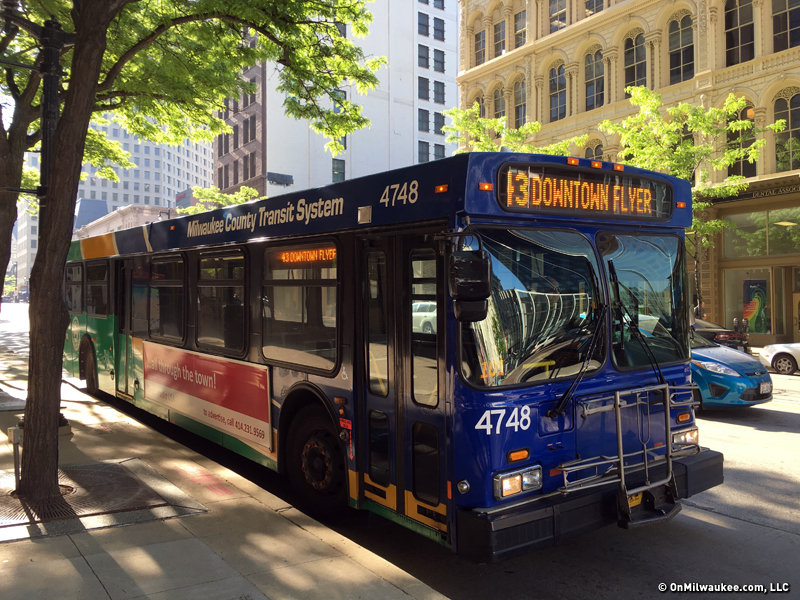At a workshop held on the UWM campus Thursday evening -- one of three held across the city this week -- area residents expressed hope, concern and even surprise as new portions and aspects of the ongoing Milwaukee Connector transit study were reviewed and discussed.
The Connector team is in the process of completing a draft Locally Preferred Alternative (LPA) and Environmental Impact Statement (EIS). Public input from Thursday's meeting will help shape the recommendations that will appear in the LPA. The LPA will be released in draft for public review and will include recommended choices for vehicles, routes, operations and financing.
The study is being conducted by the Wisconsin Center District in partnership with Milwaukee County, the City of Milwaukee and the Metropolitan Milwaukee Association of Commerce. The District received funding for the study from the Federal Transit Administration. The HNTB consulting team of local and national experts was selected to perform the study.
The study is one of several catalytic projects recommended in the Milwaukee Downtown Master Plan that has helped guided much of the neighborhood's growth over the past 5-7 years. The Connector project, along with such projects as the Park East redevelopment, Riverwalk completion, West and East Wisconsin Avenue revitalization, and various other recommended projects, provides a collective strategy to guide the growth and use of downtown Milwaukee.
The proposal's two options were outlined and debated and showcased through pods, storyboards, videos and presentations. The first option focuses on non-guided hybrid diesel buses, which resemble standard diesel buses. The technology would operate in a reserved lane and would have low floor access at stations. What makes the hybrid buses appealing is that it's a more quiet and fuel-efficient vehicle than buses operating now. No matter what option is selected, buses will remain part of the area's transportation mix, but the Connector will eliminate the need for many bus routes through downtown since bus riders will be able to tranfer to the newer vehicles.
There are currently two options on the table as Milwaukee continues its study for newer, more efficient transportation. The capital cost for the non-guided hybrid diesel bus option is estimated at around $183 million, with it costing $12 million per mile.
Option two is an innovative Guided Street Tram (GST), which combines rubber tire bus technology with train technologies, giving the vehicle twice the lifespan of a typical bus. The vehicles ride on rubber tires, but are guided by a track or other guidance system. The primary power source is electric, but there is also the potential to use an alternative hybrid diesel power source as a back up.
The GST would have a capital cost of $300 million, a rate of $21 million per mile.
"That's half the cost of a light rail system," said Skip Schifalacqua, a consultant for the Milwaukee Connector. "This is the next step in transit. It will be quicker, quieter and it will connect major attractions."
Judging by the workshop, community response is, unsurprisingly, mixed.
"Overall, it's exciting," said East Side resident Hilary Chavez. "It's progress and fuel-efficient. But, it needs to connect to the jobs in Brookfield and the inner city."
East Sider Jayne Pelton said that for her cost is a major issue.
"Something has to be done with the traffic. I like to look out the windows when I ride the bus. A crowded bus isn't fun. But, I think whatever is most economical will be the best choice."
Amid all the debates and worries, the new transit system could boost Milwaukee dramatically. Milwaukee currently is behind other cities like Denver, Portland, San Diego and Seattle which already operate buses and rail systems.
"It gets people excited to ride," says Jim Piowani, a Milwaukee Connector consultant. "It's something new with transit. It's a 21st century transit alternative."
More than 300 community meetings have already been held on the Milwaukee Connector and more are due to be held. The goal is to get the community involved in the decision-making process, according to Peter Beitzel, vice president of business development for the Metropolitan Milwaukee Association of Commerce, and chair of the Connector study's steering committee.
"Anyone who has an interest in Downtown and neighborhood development, transportation, improved access to housing and jobs, and attracting tourists and conventions should provide feedback. This is a chance to be a part of good public policy and planning, and to have a real say in the future of our city."
The Milwaukee Connector Web site, with proposed routes and other information, is milwaukeeconnector.com.







